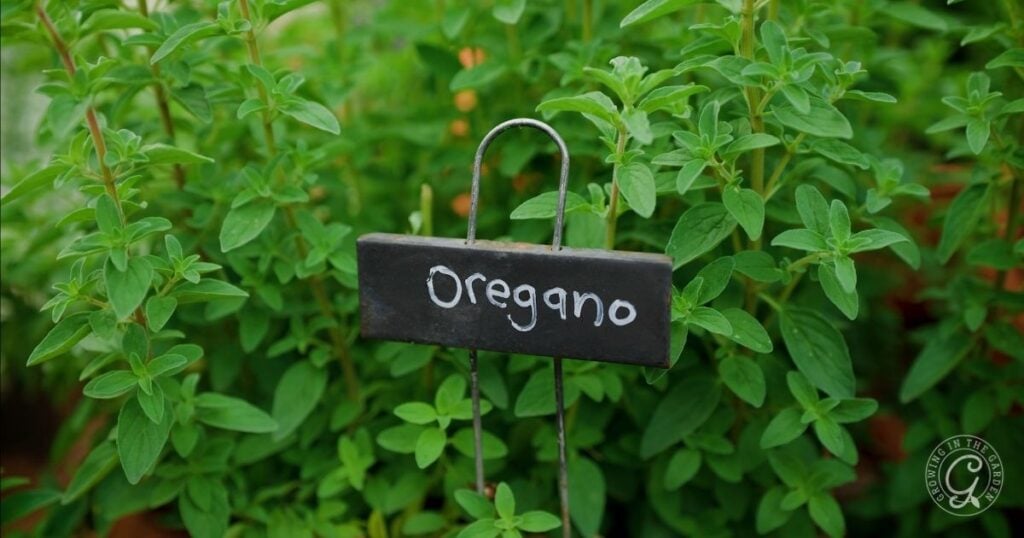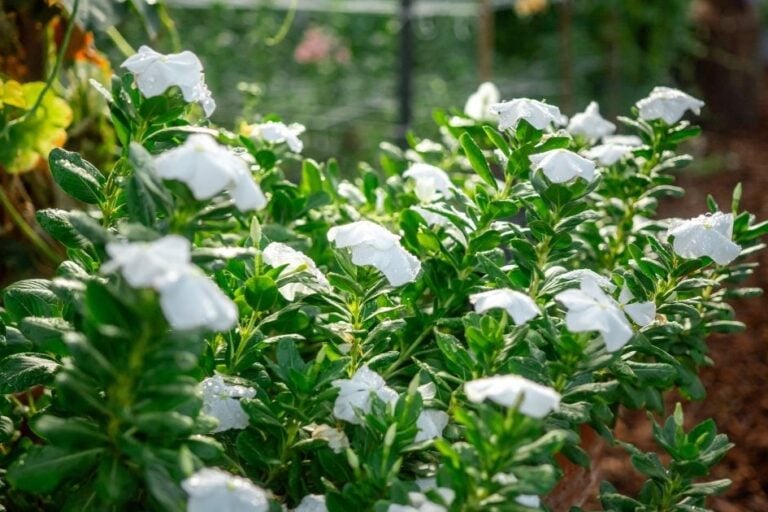How to Grow Oregano
Oregano is one of the easiest perennial herbs to grow in the low desert. With just two quick pruning sessions a year, I enjoy an endless supply of fragrant leaves for pizza, pasta, and more. If you’re new to gardening, start with oregano—it thrives in heat, doesn’t mind poor soil, and feeds bees and butterflies when it blooms. Below you’ll find everything you need to plant, care for, and harvest oregano, plus special tips for Arizona gardens, containers, and indoor setups.

10 Proven Tips for Growing Oregano
Quick‑Glance Facts
- USDA Zones: 5-10
- Grows best in full sun
- Soil pH: 6.0-8.0
- Hardy to 5 °F/–15 °C once established
- Blooms attract pollinators
1. Start With Strong Transplants —or Seeds
I prefer buying well-established transplants because they give me a head start, but if you want a special variety or prefer seed‑starting, oregano is happy to begin life indoors, too.

Transplants
- Choose well-established transplants with the strongest aroma—rub a leaf and sniff.
- Plant when soil temperatures stay above 70 °F / 21 °C.
- Set at original depth, spacing 12–18 in / 30–45 cm apart.

Seeds
- Sow indoors 8–10 weeks before your last frost.
- Transplant or direct‑seed ¼ in / 6 mm deep once the danger of frost passes.
- Thin seedlings to 18 in / 45 cm apart at 6 in / 15 cm tall.
2. Give It the Right Site
Well‑draining soil and plenty of sunshine make oregano happiest. In cooler or humid climates, space plants out so air and light can reach every stem. If you plant it in a raised bed, plan to divide it every year or two.

- Full sun is ideal, but in extreme desert heat, aim for afternoon shade.
- Well‑draining soil—sandy or rocky is fine.
- Water deeply when the top few inches of soil feels dry. In Arizona, that’s usually once a week in spring, twice a week in midsummer. Avoid soggy soil to prevent root rot.
Once or twice a year, oregano sends up nectar‑rich flowers that draw bees, butterflies, and hoverflies—another reason to tuck it near veggies.
3. Control Oregano’s Spread in Containers
My trusty whiskey barrel planter has hosted the same oregano plant since 2019. A quick haircut each spring and fall, plus a layer of compost, is all the maintenance it needs.

- Use a 12 in / 30 cm‑deep container with high‑quality potting mix—not garden soil.
- One plant per pot. It will quickly fill the container.
- Water when the top couple of inches are dry; pots dry faster than ground soil.
- Refresh with compost each spring and prune back by ⅓ for lush regrowth.
More container tips? See my full Container Gardening Guide.
4. Feed Lightly, Mulch Wisely
Oregano isn’t fussy—no extra fertilizer or thick mulch needed.
- Add 1–2 in / 2.5–5 cm of compost each spring.
- Lightly mulch with shredded bark or straw to conserve moisture—but pull it back 2 in / 5 cm from stems to prevent rot.
5. Pair Oregano With Almost Any Vegetable
Add a pot or two of oregano around your garden to attract beneficial insects. Learn about more plants that attract beneficial insects in this guide.
- Tomatoes, broccoli, and cabbage especially benefit—oregano flowers attract hover flies that devour aphids.

6. Harvest Early and Often
Because oregano is perennial, I snip what I need all year. After a big spring or fall haircut, the surplus goes to my happy chickens. Learn about more of my favorite perennial herbs in this guide.

- Begin cutting when plants reach 6–8 in / 15–20 cm tall.
- The more you snip, the more it grows.
- Strip leaves by pinching the tip and sliding your fingers down the stem.

Prune flower spikes after bloom to keep leaves tender and encourage fresh growth.
7. Preserve Peak Flavor

When I have extra, often after those twice‑a‑year trims, freeze‑drying is my go‑to for the freshest flavor. Curious? Check out my Freeze‑Drying Herbs Guide.
- Air‑dry: Hang small bunches out of direct sun until crisp; store whole leaves in jars, then crumble when needed.
- Freeze: Seal sprigs in freezer bags or purée leaves with a splash of olive oil, pour into ice‑cube trays, and freeze.
- Freeze‑dry: My favorite—maintains color and aroma for up to a year.

8. How to Grow Oregano in Arizona
One of the easiest perennial herbs for hot climates—perfect for beginners. Grab even more desert‑herb tips in my Growing Herbs in Summer Heat Guide.

- Planting Windows: February–April and October–November.
- Provide afternoon shade from June through September.
- Divide overgrown clumps in February or March.
- After summer heat and again in early spring, prune back ⅓, top‑dress with compost, and water deeply for a quick rebound.

Vegetable, Herb, and Fruit Planting Guide for the Low Desert of Arizona

The ultimate resource for gardeners in arid regions with hot summers and mild winters—designed specifically for the low desert of Arizona.
It features information on how and when to start seeds indoors and when to transplant them outside for nearly 100 different fruits, vegetables, and herbs.
9. Bring Oregano Indoors
Growing inside? You’ll need a decent grow light—bright kitchen windows rarely cut it, but oregano will thrive under LEDs.
- Light: South‑facing window or grow light (12 hrs / day) set 2–4 in / 5–10 cm above foliage.
- Temp: Keep above 80 °F / 27 °C for best growth; avoid drafts.
- Airflow: Thin plants to 6 in / 15 cm apart and rotate pots when watering.
- Harvest: Snip once stems exceed 6 in / 15 cm.
10. Watering & Troubleshooting at a Glance
| Issue | Symptom | Fix |
|---|---|---|
| Root rot | Wilting despite wet soil | Improve drainage; water less often |
| Spider mites | Fine webbing, speckled leaves | Spray leaves with a firm stream of water; increase humidity |
| Leggy growth indoors | Long, pale stems | Move closer to light OR lower grow light |
Ready to Plant?
For a quick reference to spacing, timing, and care, see my Visual Guide to Growing Herbs—it’s packed with photos and information to get you started. Questions? Ask me below, or share your own oregano success stories.










Leave a comment on How to Grow Oregano